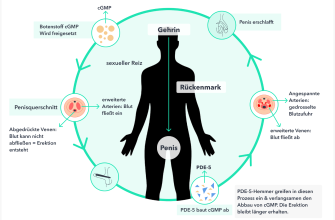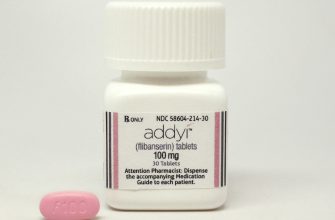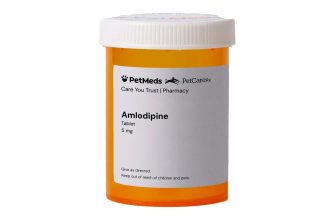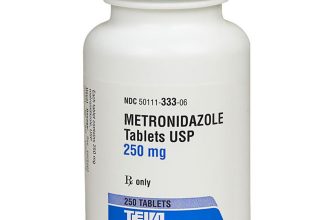Augmentin, a combination of amoxicillin and clavulanate, often treats bacterial sinusitis. However, it’s crucial to understand that it’s only effective against bacterial infections, not viral ones. A doctor’s diagnosis is paramount before starting any antibiotic treatment.
Your physician will consider several factors before prescribing Augmentin, including the severity of your symptoms, your medical history, and the potential for allergic reactions. Typical symptoms of bacterial sinusitis involve facial pain, pressure, and thick, discolored nasal discharge lasting more than 10 days. A simple visual examination and discussion about your symptoms are usually sufficient for an initial assessment.
If Augmentin is prescribed, follow your doctor’s instructions precisely regarding dosage and duration. Complete the entire course of antibiotics, even if symptoms improve before you finish. Stopping early can lead to antibiotic resistance. Side effects are possible; common ones include diarrhea, nausea, and rash. Report any unusual symptoms to your healthcare provider immediately.
Remember: Augmentin is a powerful medication. Self-medicating is risky and can be detrimental to your health. Always consult a healthcare professional for diagnosis and treatment.
- Augmentin for Sinusitis: A Detailed Guide
- When to Consider Augmentin
- Understanding Augmentin’s Role
- Potential Side Effects and Precautions
- Dosage and Treatment Duration
- Alternatives to Augmentin
- When to Seek Immediate Medical Attention
- Follow-up
- What is Sinusitis and When is Augmentin Necessary?
- Diagnosing Sinusitis
- When Augmentin is Prescribed
- How Augmentin Works Against Sinusitis-Causing Bacteria
- Typical Dosage and Administration of Augmentin for Sinusitis
- Potential Side Effects and Precautions When Taking Augmentin
- Seeking Professional Medical Advice for Sinusitis Treatment
Augmentin for Sinusitis: A Detailed Guide
Augmentin, a combination of amoxicillin and clavulanate, often treats bacterial sinusitis when other treatments fail. However, it’s crucial to understand its use and potential side effects.
When to Consider Augmentin
- Your doctor diagnosed bacterial sinusitis, not a viral infection.
- Symptoms like facial pain, pressure, and thick yellow or green nasal discharge persist for at least 10 days despite using over-the-counter remedies.
- Your symptoms worsen after initial improvement.
Remember: A doctor’s diagnosis is necessary before starting Augmentin. Self-treating can be harmful.
Understanding Augmentin’s Role
Augmentin combats bacteria causing sinusitis by inhibiting their growth. Amoxicillin targets the bacteria directly, while clavulanate protects amoxicillin from enzymes that bacteria produce to resist it, increasing its effectiveness. This makes it a powerful option for stubborn infections.
Potential Side Effects and Precautions
- Diarrhea is a common side effect. Severe or persistent diarrhea requires immediate medical attention.
- Nausea and vomiting are also possible. Consider taking Augmentin with food to mitigate this.
- Allergic reactions, although rare, can be serious. Stop taking Augmentin and seek medical help if you experience rash, hives, swelling, or difficulty breathing.
- Augmentin might interact with other medications. Inform your doctor about all medications you’re taking.
Dosage and Treatment Duration
Your doctor will determine the correct dosage and duration based on your individual needs. Typical treatment lasts 7-14 days. Completing the full course is vital, even if you feel better sooner. Stopping early can lead to recurrence.
Alternatives to Augmentin
- Other antibiotics, depending on the specific bacteria involved and your medical history.
- Saline nasal irrigation to clear nasal passages.
- Over-the-counter pain relievers like acetaminophen or ibuprofen for symptom management.
When to Seek Immediate Medical Attention
- Severe allergic reaction (rash, swelling, difficulty breathing).
- High fever (over 101°F or 38.3°C).
- Severe headache or stiff neck.
- Vision changes.
This guide provides information; it is not a substitute for professional medical advice. Always consult a doctor before starting any medication.
Follow-up
After completing the Augmentin course, schedule a follow-up appointment with your doctor to ensure the infection has cleared. They may perform additional tests to confirm the results of treatment.
What is Sinusitis and When is Augmentin Necessary?
Sinusitis is an inflammation of the sinuses, air-filled spaces behind your forehead, cheeks, and eyes. This inflammation usually results from a viral infection, like a common cold, but can also stem from bacterial or fungal infections, or even allergies. Symptoms include facial pain or pressure, congestion, and a runny or stuffy nose. Sometimes you’ll also experience fever, headache, and cough.
Diagnosing Sinusitis
Your doctor will diagnose sinusitis based on your symptoms and a physical exam. They may use imaging techniques like X-rays or CT scans to confirm the diagnosis and rule out other conditions. A prolonged (greater than 10 days) infection that doesn’t improve with over-the-counter medications suggests a bacterial infection and a possible need for antibiotics.
When Augmentin is Prescribed
Augmentin, an antibiotic containing amoxicillin and clavulanate, targets bacteria resistant to amoxicillin alone. Your doctor might prescribe Augmentin if they suspect a bacterial sinus infection that hasn’t responded to other treatments, or if they believe it’s caused by bacteria particularly resistant to standard antibiotics. This is usually only after a trial of other, less potent, antibiotics has failed. Remember, Augmentin is a powerful drug, and your doctor will consider potential side effects and the overall benefit before prescribing it. Always follow your doctor’s instructions regarding dosage and duration of treatment. Improper use can lead to antibiotic resistance.
How Augmentin Works Against Sinusitis-Causing Bacteria
Augmentin, a combination of amoxicillin and clavulanate, combats sinusitis by targeting the bacteria responsible for infection. Amoxicillin, a penicillin-like antibiotic, inhibits bacterial cell wall synthesis, preventing bacteria from multiplying and repairing damage. However, many sinusitis-causing bacteria produce beta-lactamase enzymes, which break down amoxicillin, rendering it ineffective.
This is where clavulanate comes in. Clavulanate acts as a beta-lactamase inhibitor, blocking the enzyme’s action, thus protecting amoxicillin and allowing it to work effectively against resistant bacteria. This synergistic effect ensures Augmentin’s success against a broader range of bacteria commonly associated with sinusitis, including Streptococcus pneumoniae and Haemophilus influenzae.
The specific bacteria causing your sinusitis will determine the drug’s efficacy. Always consult a doctor for diagnosis and treatment. A doctor can also determine if Augmentin is the appropriate antibiotic for your situation, considering factors like allergies and the severity of your infection.
Remember, antibiotics are most effective when taken as prescribed. Completing the full course, even if you feel better sooner, ensures complete eradication of the bacteria, preventing recurrence and the development of antibiotic resistance.
Typical Dosage and Administration of Augmentin for Sinusitis
Your doctor will determine the correct Augmentin dosage based on your age, weight, and the severity of your sinusitis. Commonly prescribed dosages for adults are 875 mg twice daily or 1000 mg once daily.
Children’s dosages vary significantly. Always follow your doctor’s instructions precisely. Never adjust the dosage yourself.
Augmentin is typically taken with a full glass of water. Take the medicine at evenly spaced intervals throughout the day, typically every 12 hours. It’s crucial to finish the entire course of antibiotics, even if your symptoms improve before the prescribed period ends.
Take Augmentin with food to minimize stomach upset. If you experience nausea or diarrhea, contact your doctor immediately. These can be potential side effects.
| Dosage Form | Typical Adult Dosage | Important Considerations |
|---|---|---|
| Tablets | 875 mg twice daily or 1000 mg once daily | Swallow whole with water. |
| Suspension (Liquid) | Dosage varies greatly by child’s age and weight; follow doctor’s instructions. | Shake well before each dose. Measure carefully using the provided measuring device. |
Remember to inform your doctor about any allergies you have, particularly to penicillin or cephalosporin antibiotics. Also, mention any other medications you’re currently taking to avoid potential drug interactions.
Potential Side Effects and Precautions When Taking Augmentin
Augmentin, while generally safe and effective, can cause side effects. Common ones include diarrhea, nausea, and vomiting. These usually are mild and resolve without treatment. However, severe diarrhea might indicate Clostridium difficile infection – seek immediate medical attention if this occurs.
Less common, but more serious, side effects include allergic reactions. Watch for symptoms like hives, swelling, or difficulty breathing. Stop taking Augmentin and seek immediate medical help if you experience an allergic reaction. Inform your doctor of any known drug allergies before starting treatment.
Augmentin can affect liver function in rare cases. Your doctor may order blood tests to monitor this. Report any signs of liver problems, such as yellowing of the skin or eyes, to your doctor promptly.
For pregnant or breastfeeding women, discuss Augmentin use with your doctor. The benefits must outweigh potential risks to the baby. Similarly, consult your physician about using Augmentin if you have kidney problems, as dosage adjustments might be necessary.
Note: This information is not a substitute for professional medical advice. Always follow your doctor’s instructions regarding dosage and treatment duration. Report any unusual symptoms to your healthcare provider.
Seeking Professional Medical Advice for Sinusitis Treatment
Schedule an appointment with your primary care physician or an ear, nose, and throat (ENT) specialist. They can accurately diagnose your condition through a physical exam and potentially imaging tests.
Describe your symptoms clearly: pain location, severity, duration, any accompanying fever, cough, or facial pressure. Mention any allergies or prior medical conditions. Accurate information helps your doctor tailor the best treatment.
Discuss your medical history, including any medications you are currently taking, to avoid potential drug interactions. Be upfront about over-the-counter remedies you’ve already tried and their results.
Expect your doctor to consider various treatment options beyond antibiotics. These may include nasal corticosteroids, saline nasal rinses, or decongestants. They will guide you to the most suitable option based on your specific needs.
Follow your doctor’s instructions precisely. This includes completing the prescribed medication course, even if symptoms improve. Improper use can lead to treatment failure and antibiotic resistance.
Contact your doctor immediately if your symptoms worsen or you experience new complications. Prompt attention can prevent serious health problems.
Regular follow-up appointments allow your doctor to monitor your progress and adjust treatment as needed, ensuring optimal recovery.










